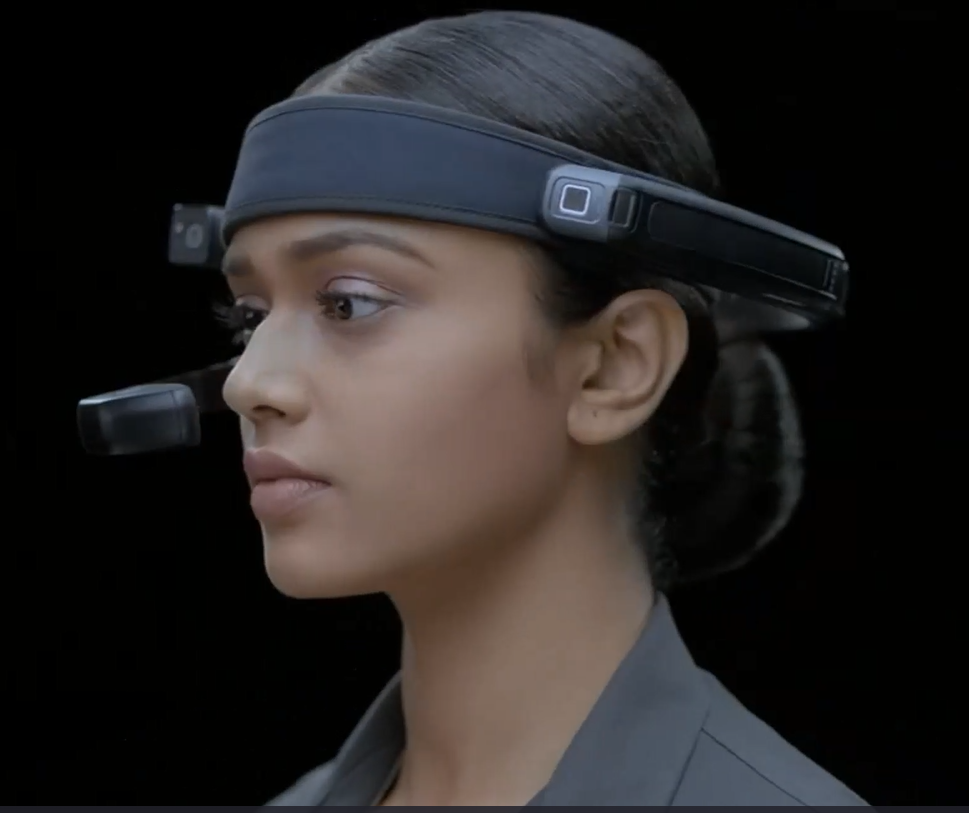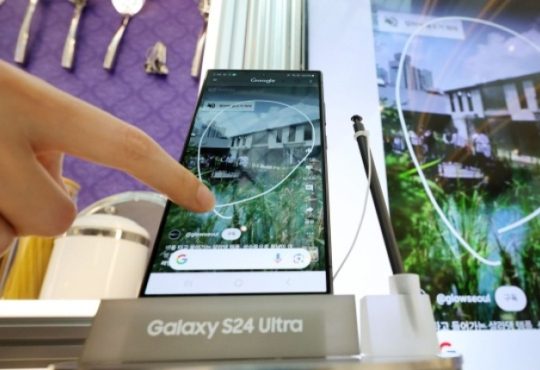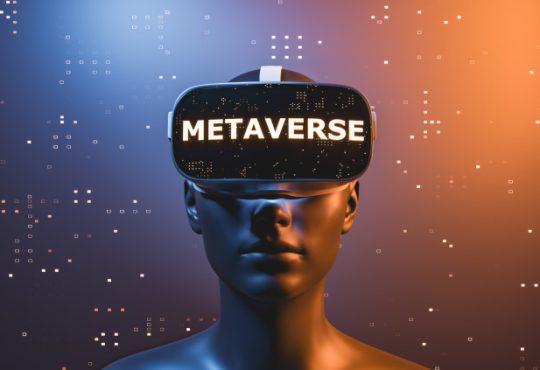
See the unseen, go whenever you want, and transform the environment around – with AR, you are in charge of what is happening around you. In this ultimate guide, we will cover everything you need to know about augmented reality and how it changes our lives. Get yourself comfortable and prepare to welcome unknown worlds.
What Is Augmented Reality and How Does It Work
Let’s start with the augmented reality definition. Augmented reality is a technology that adds a digital layer to the world around us and imposes virtual elements and experiences into our reality. To see and feel the enhanced reality, you need special hardware devices: either wearable or non-wearable.
These devices blend our real world with a virtual one, creating the illusion that all the objects you interact with are real. Here are some examples of common AR devices:
- Smart glasses
- Head-mounted displays
- Smartphones
- Tablets
- Computers
- Projectors
These devices differ by their level of immersion and the kind of control you get over them. To help learn more about the possibilities each device provides, we’ve cherry-picked our favorite ones in different categories:
- Head-mounted – Microsoft HoloLens 2
- Smart glasses – Google Glass Enterprise Edition 2
- Smartphone – Apple’s latest iPhone 12
To better understand how augmented reality influences our lives and transforms its various aspects, check out these augmented reality examples from different industries.
-
Healthcare
From providing more detailed drug information with augmented reality demos to assisting surgeons during surgery with x-ray views – AR is already revolutionizing healthcare.
-
Retail
Do you love IKEA stuff as we do? Then you may know about its AR app where you can virtually place furnishings in your space. Try it before you buy it – a lot of international brands use AR to help their customers try the product and check how it looks before making a purchase. A great way to boost sales, isn’t it?
-
Navigation
With the help of AR, now it’s easier to navigate large buildings (such as airports, shopping malls, etc.) as well as big cities. People can easily travel from one point to another and find any route or way out with the help of augmented reality on their phones.
Impressed? This is just a small part of what AR brings into our lives. Buy Realwear compatible hard hats to stay safe in hazardous situations. And it’s all thanks to the leading AR development companies that make the impossible possible. Let’s check out a few of them.
Assisted Reality – The Next Big Thing?
In Industry 4.0, Augmented Reality (AR) and Virtual Reality (VR) often get the spotlight as the next great leap in boosting worker productivity. But this X-Reality (XR) technologies aren’t always practical when used as manufacturing or frontline tools, often unsafe for workers in many use cases.
Enter another aR: assisted Reality. But what is assisted reality? How does it differ from augmented reality?
Assisted Reality gives you access to the right information right when you need it, allowing you to have full situational awareness. Unlike AR, it’s a real first, digital second experience. Assisted Reality allows a person to view a screen within the immediate field of vision, hands-free. Information is not overlaid with a real-world view.
You can get the best quality high-tech Assisted Reality device i.e, Realwear Navigator from RealtimeAR. Buy Realwear Navigator 500 at the best prices in Australia.
11 Best Augmented Reality Mobile Apps
Here is a list of augmented reality applications that disrupt the market and attract more customers to their brand.
- Blippar – a type of AR browser that provides information about different everyday objects such as gadgets, artworks, celebrities, logos, etc.
- Civilisations AR – AR app that comprises 30 historical artifacts users can interact with.
- Mondly – this app has combined both virtual and augmented reality to provide the best experience for language learners.
- Walla Me – AR app that helps you discover and listen to hidden messages recorded by people in different parts of the world.
- Ink Hunter – an application that allows users to try on the desired tattoo on their body before actually inking it. No risks, remove at any time.
- Amikasa – 3D AR planner that helps you create the interior of your dreams.
- AR Ruler – an app that helps measure and display linear sizes of 3D objects in different units of measurement
- Find Your Car with AR – Don’t remember where you have parked your car? With this app, you have nothing to worry about. It will show you the way back to your car.
- Roar – an app that allows you to quickly compare different products and brands by price or retailer.
- YouCam Makeup – Try on different beauty products before you buy them. As easy as that.
- Thyng – create your own AR scenes and share them with your followers. Now you are in charge!
Let’s dive deeper now and see how augmented reality changes different industries. Intrigued? Let’s start with the augmented reality examples in retail.
Augmented Reality In Retail
According to Business Insider statistics, 75% of customers expect retailers to offer an AR experience. The global pandemic has changed the way we buy, and businesses need to adapt: switching to omnichannel business models and increasing the number of touchpoints with their customers.
So how can you unlock the full potential of AR in retail? Here is a list of AR examples you can adopt to transform the way people interact with your brand.
- In-store navigation
Make it easy for your customers to find any product or place they want. With the help of visual AR markers, customers only have to scan a poster at the entrance and follow directions that will guide them to the right place.
- AR product information
People are always pressed for time these days, so they need to quickly make decisions and find the information they want. AR apps simplify the decision-making process by providing AR information about any product. Just point your camera at the particular product and you’ll see all the required product information overlaid on the screen of your device.
- Virtual fitting rooms
Retailers can now increase the engagement of their customers by providing virtual fitting rooms, where people can try the product before spending any money. A lot of brands such as Timberland, Converse, and Shiseido already make use of this technology.
- Augmented reality furniture fitting
We have already mentioned Ikea and it’s a great app that lets you “try on” any furniture in your actual room. Other furniture and interior shops need to catch up and provide an experience like this to their customers.
AR transforms the retail industry, and if you want to stay competitive in the market, you always have to stay tuned for innovations. Interested in how specific industries do it? Let’s see how AR is used in such spheres as jewelry and fashion.
Augmented Reality for Jewelry Shopping
What could be better than trying on jewelry online in the comfort of your home? With augmented reality, this isn’t a dream anymore. With the emergence of AR jewelry apps, customers feel like they already have the product and are more likely to buy it. In turn, businesses provide a more personalized customer experience, engage their customers, and gradually nurture cold leads.
However, everything is not as easy as it seems. We have recently tested different AR jewelry apps to see if they can replace offline shopping. Here is what we’ve found:
- It takes some time and can be tricky to put your finger in the right position and adjust the lighting, so it looks like the ring is not on your finger but floating next to it
- Serious lags in motion tracking
- Poor object tracking
- Unconvincing 3D models
To sum up, augmented reality apps have a lot of potentials, but only if developed in the right way. This industry is still a bit rough, so if you want to create your own jewelry augmented reality ap+654p, you have a good chance of beating your competitors.
Augmented Reality for Fashion
The try-before-you-buy concept has already transformed the fashion industry as well. It helps potential customers visualize themselves in new clothes, shoes, or even makeup. Look at the examples of brands like Sephora, ModiFace (cosmetics), Dior (glasses), Wanna Nails, Tenth Street Hats, and others. Their popularity has skyrocketed after introducing virtual shopping.
There are several principles fashion and beauty brands need to follow to make the AR experience flawless:
- Entertain your customer
Turn shopping into an unforgettable game and promote the emotional link to your brand with the help of 3D animations and games. One of the examples is the SNKRStash app by Nike, where customers can look for hidden locations via hints in their AR app.
- Elevate AR experience in physical stores
Brick and mortar stores can also introduce the AR experience to their customers. For example, Zara adds virtual pop-up models at their locations and Louis Vuitton has created artistic window displays with the help of AR.
- Think about the client of tomorrow
The main concept of AR in any industry is to always study your customer and think ahead. Stay tuned to your market demands and surprise and entertain your customer before your competitors do the same.




